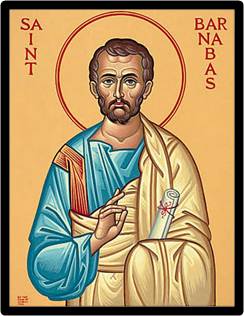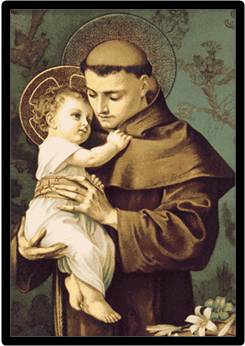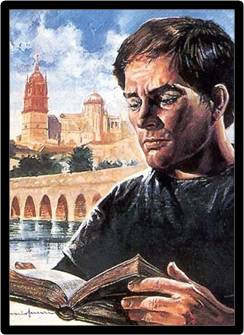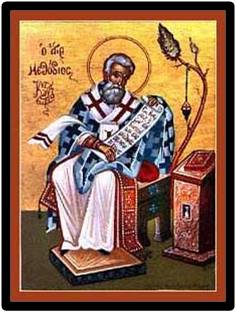JUNE 11 - ST. BARNABAS

Joseph was a Levite Jew born on the island of Cyprus and a cousin of St. Mark. Soon after Pentecost, Joseph became a Christian and the apostles changed his name to Barnabas, which means “son of consolation.” Although he was not one of the original twelve apostles, Barnabas is called an apostle by St. Luke in his Acts of the Apostles. This is because, like Paul the apostle, Barnabas received a special mission from God.
As soon as he became a Christian, St. Barnabas sold all he owned and gave the money to the apostles. He was a good, kind-hearted man who was full of enthusiasm to share his belief in and love for Jesus. The Apostles found that Barnabas was a very good preacher.
He was sent to the city of Antioch to preach the Gospel. Antioch was the third largest city in the Roman Empire and it was here that the followers of Jesus were first called Christians. Barnabas soon realized that he needed help to reach all the people.
He thought of St. Paul of Tarsus who was earlier called Saul. He believed that Paul’s conversion had been real and Barnabas helped convince St. Peter and the Christian community that Paul was now true to God and a follower of Jesus.
Barnabas who was a humble person, asked St. Paul to come and work with him. He was not afraid of sharing the responsibility and the power. He knew that Paul, too, had a great gift to give and he wanted him to have the chance to share it.
Then the Holy Spirit chose Paul and Barnabas for a special mission, that of preaching the gospel in far off lands. The two apostles set off on their daring and dangerous missionary journey. They had many sufferings to bear and often risked their lives but their hardships did not stop them from preaching. They won many people to Jesus and his Church.
Later St. Barnabas went on another missionary journey with St. Mark. They went to Barnabas’ own country of Cyprus and so many people became believers through his preaching that Barnabas is called the apostle of Cyprus.
St. Barnabas died a martyr when he was stoned to death in the year 61.



